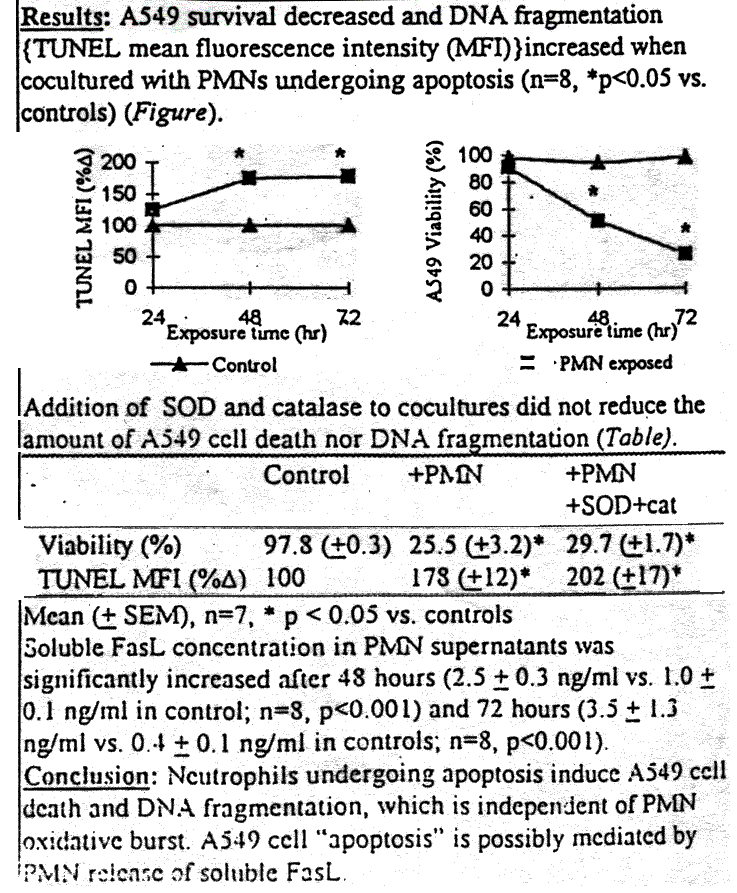
| 11 th Annual Pediatric Critical Care Colloquium |
| Session/Time | Cell Physiology/Sepsis/Sat, 8:00 - 9:30 AM |
| Title | Neutrophil Release of Soluble Fas Ligand Induces Apoptosis of Alveolar Epithelial Cells |
| Author | KL Serrao, JD Fortenberry, LS Brown |
| Affiliation | Critical Care Medicine, Egieston Children's Hospital at Emory University, 4tlanta, G,4 |
| Introduction | Modulation of cell death of both phagocytes and alveolar epithelium may play a critical role in the progression and resolution of acute lung injury. The Fas (CD95)/Fas ligand (FasL) system plays a putative role in induction of apoptatic cell teath in neutrophils (PNINS) but has not been well established in riuman adveolar epithelium. Interaction of PMNs with Fas- Dearing cell types may also induce apoptosis (Liles et al., J Exp Med, 184:429, 1996) via the release of soluble FasL. We hypothesize that PMNs induce epithelial apoptosis via the paracrine release of soluble FasL. |
| Method | In coculture experiments, cells from human lung adenocarcinoma cell 'ine (A549, ATCC) were grown to confluehce in Transwell chambers. The A549 cells were then exposed for 24-72 hours to isolated PNINs (spontaneously undergoing apoptosis) placed on a n-Licroporous membrane insert which prevents PNIN contact. To assess the role of PNIN oxidative burst, a subset of 72 hour cocultures were allowed to incubate with 300 mcg/rnl superoxide dismutase (SOD) and 1,000 mcg/nil catalase (cat). The A549 cells were assessed for viability via vital dyes. DNA fragmentation, a hallmark of apoptosis, was measured using TdT fluorescence-labeled DUTP nick end labeling assay (TUNEL). PNFN supernatants and A549 controls were analyzed for soluble FasL presentvia ELISA |

Use your browser's back button to return to the appropriate index of abstracts...
Back to PCCC 98 Abstract Introduction | Back to PCCC 1998